 Cockfighting show staged in E. China's Heze during Spring Festival
Cockfighting show staged in E. China's Heze during Spring Festival
 Chinese New Year Flower Fair opens in San Francisco
Chinese New Year Flower Fair opens in San Francisco
 Festivities in Shanghai
Festivities in Shanghai
 PLA navy conducts drill in North China Sea
PLA navy conducts drill in North China Sea
 World's high-tech hotels
World's high-tech hotels
 Li Na poses with trophy on Brighton Beach in Melbourne
Li Na poses with trophy on Brighton Beach in Melbourne
 Six Chinese divers back safely after 300-meter saturation dive
Six Chinese divers back safely after 300-meter saturation dive
 Traditional wedding ceremony of Yao people
Traditional wedding ceremony of Yao people
 Taipei Game Show attracts geeky gamers
Taipei Game Show attracts geeky gamers
 |
Celebrated stallions
The Han were not as expert at horse riding as the northern tribes, but horses were not uncommon. It was rare, though, for them to be venerated like the Six Steeds of the Zhaoling Mausoleum in Shaanxi province.
These warhorses belonged to Emperor Taizong (AD 598-649), also known as Li Shimin, of the Tang Dynasty (AD 618-907). He commissioned artisan Yan Lide and painter Yan Liben, who were brothers, to carve six warhorses he rode before he built his empire. The reliefs, each standing 1.7 meters high and 2 meters wide, used to flank the sacrificial altar to the north of the mausoleum.
The steeds have poetic names that mostly denote their markings. Four of them were hit by arrows and the emperor left memorial tributes to each of them along with records of the military campaigns in which they carried him or in which they fell.
The carvings were broken apart early in the 20th century and two of them were smuggled out of China. They are now housed in a museum at the University of Pennsylvania, while those remaining in China are in a museum in Xi'an, the Shaanxi provincial capital.
By aesthetic standards of the day, they were quite realistic. Horses made frequent appearances in ancient scroll paintings, but most were static and inconspicuous, acting as loyal companions to reclusive scholars or officials seeking sanctuary in nature.
Unlike ancient artists obsessed with saddled horses, Xu Beihong (1895-1953) preferred feral and wild ones. Trained in France, the Chinese master studied equine anatomy, spending hours observing horses' movements and expressions. Especially fond of Mongolian breeds, he left a treasure trove of up to 1,000 sketches.
Xu's portrayals of horses galloping or trotting past, in a rich variety of poses, are some of the most captivating of their kind. Using mostly black ink, they combine the best methods from East and West. The lines and brush strokes are simple, yet invariably evoke the essence of the animals.
They are a contrast to the horses painted by Giuseppe Castiglione (1688-1766), an Italian missionary who created many eight-horse images for the Qing emperors. In full color and resembling traditional European oil paintings, they were, however, closer in spirit to the Chinese style of depicting horses. There was nothing of the energy and exhilaration found in Xu's drawings.


 3D film 'The Monkey King' premieres in Beijing
3D film 'The Monkey King' premieres in Beijing 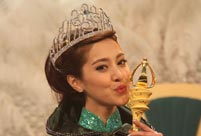 Miss Chinese Int'l Pageant 2014 held in Hong Kong
Miss Chinese Int'l Pageant 2014 held in Hong Kong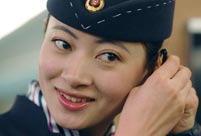 'Golden Flowers' in the Spring Festival travel rush
'Golden Flowers' in the Spring Festival travel rush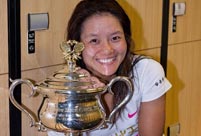 Li Na beats Cibulkova to win Australian Open
Li Na beats Cibulkova to win Australian Open Sexy models at Taipei Game Show 2014
Sexy models at Taipei Game Show 2014 'Living in ice house' competition held in central China
'Living in ice house' competition held in central China  Highlights of Chinese airborne troops'exercises
Highlights of Chinese airborne troops'exercises 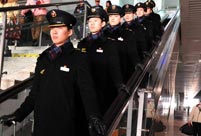 All-male high speed train crew during Spring Festival travel rush
All-male high speed train crew during Spring Festival travel rush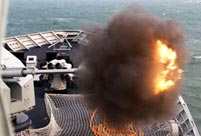 PLA navy drills in East China Sea
PLA navy drills in East China Sea President Xi visits border troops ahead of Lunar New Year
President Xi visits border troops ahead of Lunar New Year What do Chinese pack in their luggage in Spring Festival Rush?
What do Chinese pack in their luggage in Spring Festival Rush? Blind date fair in Hangzhou of Zhejiang province
Blind date fair in Hangzhou of Zhejiang province Film 'Where Are We Going, Dad' premiered in Beijing
Film 'Where Are We Going, Dad' premiered in Beijing  Australian Open champion Li Na returns to hometown Wuhan
Australian Open champion Li Na returns to hometown Wuhan Twin sisters serve during Spring Festival travel rush for the first time
Twin sisters serve during Spring Festival travel rush for the first timeDay|Week|Month